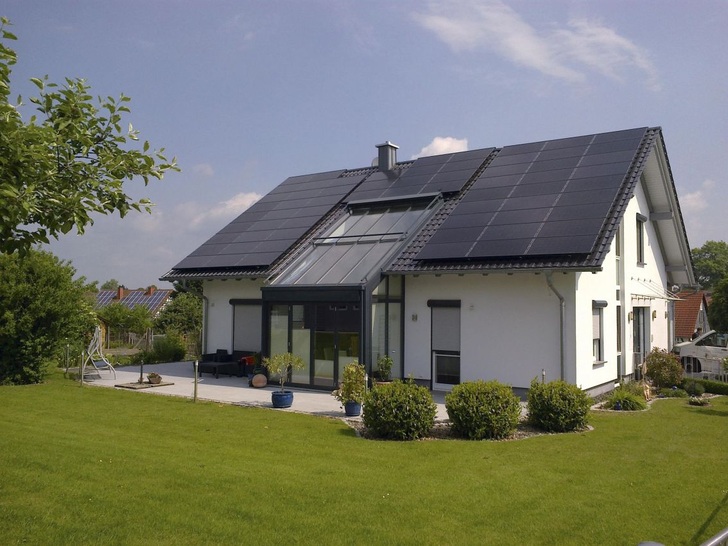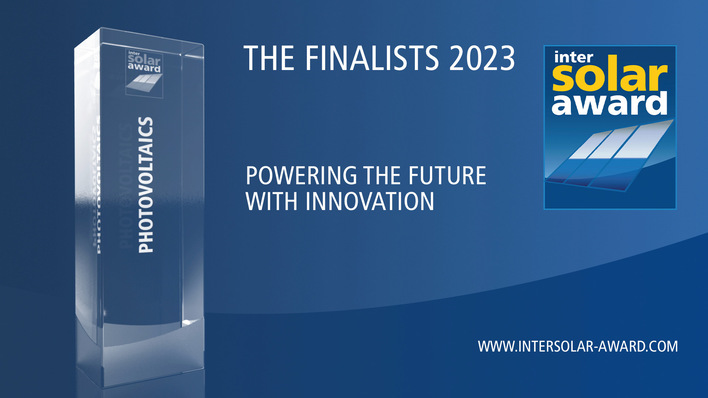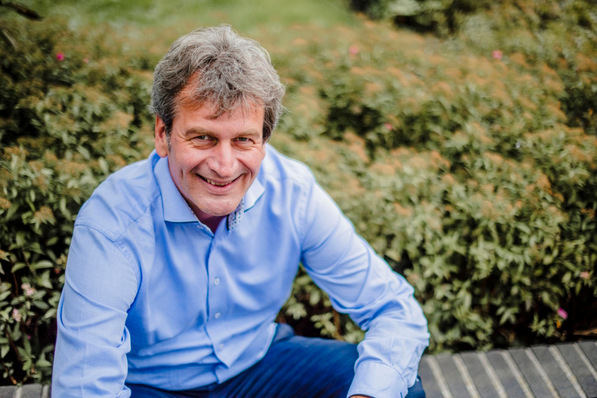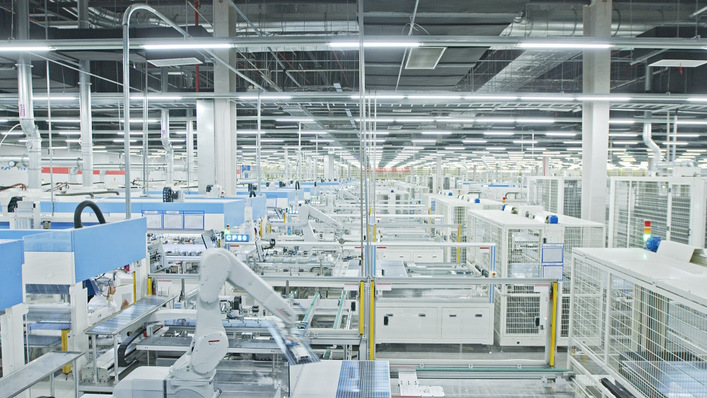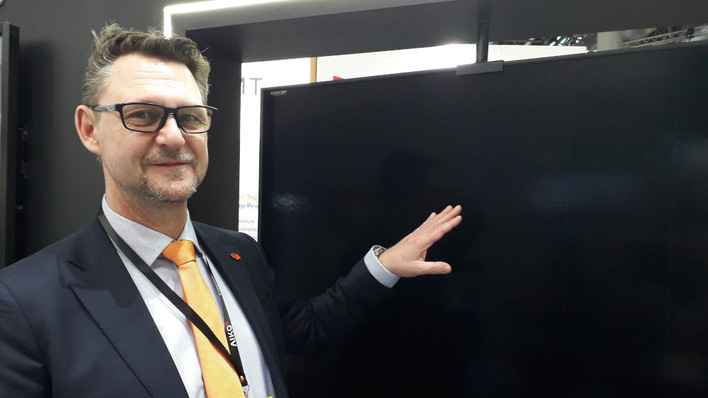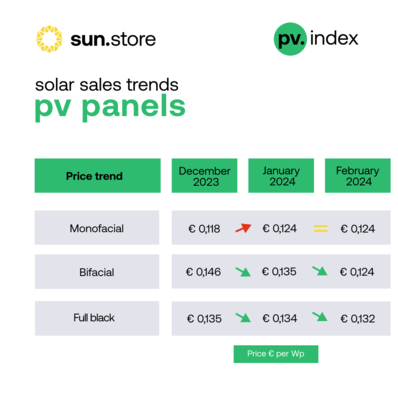When building a new home, you should consider these basic hints so that the largest possible share of your energy demand can be covered by PV. If the orientation of your house is wrong or the roof is in shade, even complex technology will not be able to make up for such deficiencies later on.
These are the 9 expert tips on the right way to use solar energy in newly built homes:
- Orientation of the building: favour east and west!
- South-facing covered veranda!
- If possible, have large windows to the east and west!
- Match the capacity of the solar generators to your electricity usage!
- Five to six square metres of solar roof produce a one-kilowatt solar generator!
- If possible, generate hot water electrically!
- Heating: run heat pumps on solar energy!
- Prefer European components and equipment!
- Leave the installing to the experts!
1. Orientation of the building: favour east and west!
There is a widely held opinion that solar generators are only efficient when mounted on a south-facing roof. This view is out-dated. It is better to orient solar panels towards the west and east. That way, the solar energy yields are spread out better across the day, and also match the consumption peaks, which are usually in the morning and evening. Ideally there should be three panels: one facing east, another one facing west and one facing south. Back to top.
2. South-facing covered veranda!
If the house is going to have a flat roof, you can orient the solar panels as necessary. With pitched roofs, the panels should preferably be facing west or east, which means that the gable is oriented towards the south. In such cases it can be desirable to have an extensive south-facing veranda there and to cover it by a solar roof made from double-glass solar panels. In the summer, this porch offers cool shade and shelter in case of thunderstorms, and in winter when the sun is lower in the sky and is not shaded by the roof, it brings light into the house and contributes to the heating system. Back to top.
3. If possible, have large windows to the east and west!
Roofs and walls facing west and north-west face what in our latitudes is the windward side, i.e. where the wind and rain usually come from. Large windows should therefore always be designed to be facing east (rising sun!) and south. South-facing glass facades should always have a canopy or marquee so that the rooms behind them do not overheat in summer.
Such a canopy can easily be built from glass-glass modules on a simple mullion construction made from wooden posts. A conservatory with a roof made from solar panels can also be a sensible idea. However: The larger the glass frontage the house has, the better its thermal properties need to be: at least triple glazing. Back to top.
4. Match the capacity of the solar generators to your electricity needs!
When conceiving your PV installation, the size of the roof is less significant. It is much more important to be aware of your own electricity usage: How many kilowatt hours are being consumed, and when. Once that is clear, the solar installation can be designed accordingly. An intelligently designed solar generator can provide electricity from March well into autumn. For the winter months, it is always necessary to look for an alternative power source, as PV will not suffice in our latitudes. Back to top.
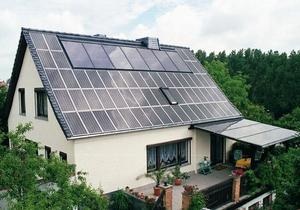
5. Five to six square metres of solar roof give one kilowatt!
Four solar panels (60 cells), which is equivalent to roughly six square metres of roof space, produce at least one kilowatt of solar capacity. Over the course of the year, they produce between 900 and 1,100 kilowatt hours of solar power. It really should not be less than 900 kilowatt hours, because the amount of usable solar irradiation in our latitudes is between 900 and 1,100 hours, depending on the region. In the Alps, yields can be around 20 to 30 percent higher: The stronger winter sun, reflecting snow and clear mountain air all improve yields. With new high-performance panels, you can even achieve 1.2 kilowatts from four standard panels, with accordingly higher yields. To produce six kilowatts (6,000 kilowatt hours) you thus need between 30 and 36 square metres of roof space. Back to top.
6. If possible, generate hot water electrically!
In order to have an ideal solar energy supply in your house, you need to take a few things into consideration as far as energy usage is concerned. If you only require a little hot water (kitchen, bathroom(s), sauna), it is better to fit all taps with electric water heaters or boilers. Instantaneous water heaters generally require large amounts of electricity for short periods of time. Boilers work better in combination with PV, because the water can be heated when the solar generators produce sufficient amounts of power, and then kept hot for a long time.
Provided they use (very) efficient appliances, a four-person household can nowadays produce hot water very economically: For as long as possible, appliances are run on the solar power off the roof; only when there is no longer enough sun in the autumn, they will switch to green electricity from the grid. This is technically and hydraulically much less expensive than gas-fired thermal systems or solar-thermal water heaters.
And: Because the boiler is usually installed more closely to the tap, water hygiene is improved. 44 degrees centigrade from the tap is far sufficient for cleaning even the most persistently greasy frying pans. There is no need for long pipes, which also reduces the energy loss and the risk of dangerous germs accumulating. Electric sub-systems further give greater flexibility as far as changes in demand are concerned, depending on the occupants and their needs for hot water. And some days the house might be of people: friends, children and grandchildren or any other guests. Back to top.
7. Heating: run heat pumps on solar energy!
When building a new home, the house builders also has the opportunity to design the heating system exactly to their needs. On the whole, there are two periods during the year when the warmth inside the house is of consequence. During the summer and the warmer weeks in spring the heating is off. In the transitional period, some heating is needed to maintain a comfortable temperature. It is only during the cold weeks that the heating system is truly needed. Our latitudes see really severe sub-zero temperatures only on a few days of the year.
As fully electric heating systems are still very expensive, it is recommended to go for a hybrid solution: Heat pumps use electricity to concentrate the thermic potential of the outside air, the ground or the ground water, and turn it into usable heat. Again, it is recommended to run the pumps off the solar generator on your roof.
Initially it is most important to insulate the house correctly. The heating demand depends on how much heat is lost through the outside walls, the roof and the cellar (if available). The heating system will also need to be able to cope with losses as a result of ventilation.
Generally speaking, air-heating pumps should be the first choice, because they are inexpensive to buy and easy to install. If more heating capacity in required, it is better to go for a geothermal heat pump. As long as there is sufficient solar electricity coming off the roof, you can run the heat pump on that. Otherwise, use green electricity from the grid. Back to top.
8. Prefer European components and equipment!
With the solar generator and its components (solar panels, wiring, inverters), with storage units (solar battery systems) and with the utilities equipment (hot water, heating) it is best to go with domestic or European manufacturers. This does not mean that foreign companies are not capable of building such components properly, but local suppliers usually have better service in case of complaints or damage. Sure, such products might be more expensive than the competition from the Far East. But buying cheap usually means buying twice. Back to top.
9. Leave the installing to the experts!
The installation of the components and equipment should under any circumstances be executed by trained technicians. These technicians and planners are familiar with meteorological and regional circumstances and often have already fitted similar systems and buildings. Very important: Get the technician involved in the process already at the planning stage. The architects might not like it, but then again, they are not the ones paying your utility bills.
Another crucial point: You can tell a good installation company – apart from their references – by the fact that beyond implementation and lightning protection, they also offer to take care of maintenance right from the start. Also, they should issue the German Federal Solar Energy Association’s ‘facility passport’ (documentation) for the installation without having to be asked. (Heiko Schwarzburger) Back to top.
Read more about energy storage
Stay informed, get our free newsletter twice a week, register here
More useful information:
http://www.pveurope.eu/News/Solar-Generator/Analyze-pollution-of-solar-modules-exactly
https://www.pveurope.eu/solar-modules/solar-modules-higher-performance-more-intelligence

